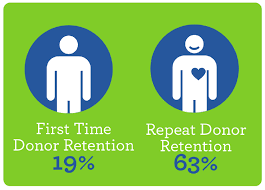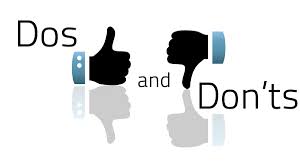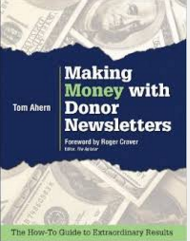Nonprofits and donors: Doing more good means making some changes
 How to Be Great at Doing Good author Nick Cooney argues that none of us has been taught what it means to truly succeed at doing good in the world. What’s more, we have never been prompted to give charity the seriousness and rigor it deserves.
How to Be Great at Doing Good author Nick Cooney argues that none of us has been taught what it means to truly succeed at doing good in the world. What’s more, we have never been prompted to give charity the seriousness and rigor it deserves.
“Although it may feel counterintuitive or even cold-hearted to take a numbers-based approach to charity, Cooney reveals that making calculated decisions isn’t just possible, it’s absolutely necessary if we want to succeed at helping others.”
Through a series of enlightening studies in human behavior, compelling interviews with philanthropy professionals, and applied personal experiences from founding and managing top-rated nonprofits, Cooney presents an eye-opening examination of our traditional approach to succeeding at charitable leadership and philanthropy autocad 2011 kostenlos downloaden deutsch.
The author’s challenge to you
It’s a challenge to get serious about charity. His challenge rests on two premises: “1) The first premise is that the goal of charity is to make the world a better place. It is to help those who are suffering and to increase well-being. 2) The second premise is that in whatever capacity you carry out charity—as a donor, a volunteer, or a nonprofit worker—you want to succeed as much as possible.”
At the time this book was published, Americans donated only three percent of their income to charity and participated in an average of 15 hours a year volunteering z0r herunterladen. If every dollar and minute should be maximized to its fullest potential, donors, volunteers and nonprofit leaders must overcome their dependency on assumptions rather than facts, which are primal barriers to smart decision making, and avoid navigating choices based on emotional tendencies, among other things.
A tall order but one that Cooney asserts is worth pursuing if we genuinely want our charitable leadership and philanthropy to be truly great. What that means for nonprofits is a new language used with donors that empowers and informs ts icons download kostenlos. What that means for donors is applying rigor to giving so the dollars do the most good.
Doing good or doing great? A tale of two charities
Cooney gives the example of the Theatre Communications Group versus the Seva Foundation. The theater group’s mission involves improving communications between theaters and workers so they can learn from each other. The Seva Foundation works to reverse blindness in India caused by cataracts. It sends surgeons to India to remove cataracts through a simple and inexpensive procedure. It combats blindness in over 100,000 people each year.
The author discusses which charity makes the world a better place by “reducing suffering and increasing well-being.” When we confront the brutal fact that not all charities do the same amount of good, the Seva Foundation is more successful in making the world a better place. It reduces more suffering and increases the well-being of hundreds of thousands of people for their lifetimes. It also does it inexpensively.
Therefore, contributing to a theater organization can certainly be a personal passion and can consume some of the 97 percent of Americans’ income that is not dedicated to charity. But to actually help people and reduce their suffering, the Seva Foundation deserves your charitable dollars.
Three steps toward making the most impact
An excerpt from our Page to Practice book summary…
CausePlanet: You stress that people need to go against their natural, emotional instincts to support charities that make an efficient impact. Awareness is the first step, you say, but what other concrete steps can people take and how can they create a support system so a mass of people can move in this direction?
Nick Cooney: As I say in the book, empathy and compassion should be the fuel that we put in our tank, the things that motivate us to give. But they should not be the hands on the steering wheel that decide where to give. Instead, we should try to think logically and dispassionately about the very best places to give.
Some concrete steps to help make that happen are first, realize that the reason we donate is to do good–namely, to reduce the suffering or increase the happiness of others. If we really care, we should donate where it will do the most good–decrease the most suffering, increase the most happiness.
And that means not necessarily focusing on the causes that we feel most interested in at the moment, or that are the most relevant to us, or that are local to where we happen to be living. Rather, it means trying to find the causes where our dollars will do the most good, even if it’s not a cause or a charity we’ve thought a lot about before. So realizing that and internalizing it is step one.
Step two is look for what info is out there already, for example sites like Animal Charity Evaluators and Givewell. I also recommend browsing the site of the Open Philanthropy Project, which has tried to do some of this same sort of analysis.
Third, connect with others who are already trying to think about and carry out charity in this way. Places like The Center for Effective Altruism have some helpful resources for connecting with others who want to do the most good with their money (or time).
See book summaries on related topics:
Charity Case: How the Nonprofit Community Can Stand Up for Itself and Really Change the World
With Charity for All: Why Charities Are Failing and a Better Way to Give
Do More Than Give: The Six Practices of Donors Who Change the World
Small Change: Why Business Won’t Save the World
Charity On Trial: What You Need to Know Before You Give
Image credits: wiley.com, charitycoverdalefury.com, thephilanews.com, nickcooney.com






















